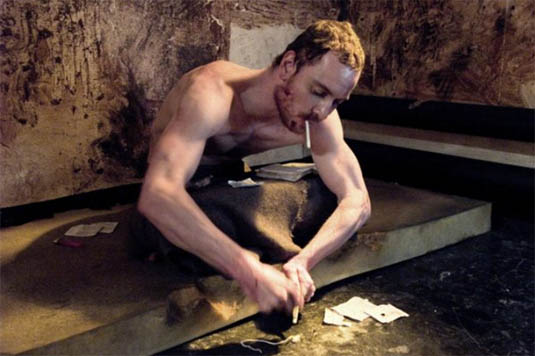
 Once more, I've been diving into the Irish history. I've seen the films "The Wind that shakes the barley" and "Hunger". They portray two very different parts of irish history, but both has similarities: Extreme use of force against innocent people. I got so shocked some times, that I had to look away.
Once more, I've been diving into the Irish history. I've seen the films "The Wind that shakes the barley" and "Hunger". They portray two very different parts of irish history, but both has similarities: Extreme use of force against innocent people. I got so shocked some times, that I had to look away.Well, we can discuss how innocent all those who sat in the Maze in 1981 was, but still; they were humans. What they were put through were humiliating, nothing more nothing less. How can people torture and murder? They define the "others" as a threat, something less then human.
Back to the films. "The wind that shakes the barley" tells the story before and after the irish partition, into the Freestate and Northern Ireland in 1921. We meet the black and tans, feared for their ruthlessness. They were known for their several attacks on irish sivilians, and among their actions during their stay in Ireland was the burning of Cork, 11. december 1920. They were called black and tans because of their "uniform", which was kaki-coloured trousers and a black/blue jacket. These men were former soldiers, brought into Ireland to support The Royal Irish Constabulary.
Our man in the field is Damien, a promising irish boy going away to London to become a doctor. But things don't always go the way we like them to go. To make a long history short: He changes his mind (why: check out the film...) and joines his brother in the fight for Irish independence. In the end the brothers stand on different sides, Damien has become a true republican, who will not bow down an inch for the Britains. His brother fights for what he believe is right, the treaty they got in 1921, were Ireland got divided. The irish people must still listen to what is coming from London.
"Hunger" is maybe one of the most disturbing films I've seen in a long time. The year is 1981, and the place is the famous Maze-prison in Northern Ireland. Margaret Thatcher (may she burn in Hell!) has decided that paramilitary prisoners (read: IRA) is that no more, they are criminals like anybody else inside the walls. That means that they are being robbed for some crucial rights.
But let's not forget that this protest was nothing new, because the IRA-inmates had since mid-70's made their statement clear.
When we talk about the hunger-strike in 1981, we cannot forget Bobby Sands. In the film is Michael Fassbender portraying the man, who became a hero during the strike. And Fassbender is doing a mighty fine job. What happened in the Maze will for always be burnt into the collective memory of everyone who has anything to do with Irish history or Ireland in general.
I could have written much more about the history and the film. But I hope that this has given you a taste and will inspire you to read more, dig deeper into the Irish soul and history.
Erin go Bragh!





1 comment:
2 beautiful films, and once again great to see a non-Irish person who understands our history so well :)
It's really true what you said about how the memory of the hunger strike is burnt into people's minds here. Everyone I know here still feels the same sentiment you expressed about Thatcher :) I saw a Scottish comedian once who made a great joke about her:
"In England this week they were discussing whether or not they should give Maggie Thatcher a state funeral. In Scotland, we would only discuss whether or not she needs to be dead before we bury her." haha my feelings exactly.
Post a Comment